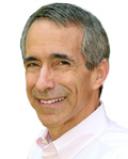

Regenerating the Power of Rest
Sleep medicine appears in decline. Sleep centers and laboratories are closing at record rates. Yet how can sleep medicine be dying when the population suffers so much from insomnia and sleep apnea, while the public increasingly recognizes sleep as critical to happiness, performance, and preventing most major medical illnesses?
The answer: insurance reimbursement. After Colin Sullivan and others developed CPAP, the air splint device that effectively treats sleep apnea, sleep medicine – and sleep laboratories – mushroomed. Many centers disregarded the premises and promises of sleep medicine and became near exclusively sleep apnea testing laboratories.
Lots of money was made. Yet the chronic, pervasive nature of sleep disorders was inadequately considered. Giving sleep apnea patients a CPAP machine and not addressing their concurrent insomnia, obesity, hypertension, anxiety and depression – or even their CPAP compliance – did not solve the public health problem of sleep apnea. It also promoted neglect of treatment of other sleep disorders, where the money flow was much less.
Now insurance companies believe that home sleep tests, combined with automated positive airway pressure devices, can replace inpatient testing and treatment and the payment streams they require. The truth is they won’t. Home studies leave out extremely important information about people’s sleep and how they affect health. The new “model of care” also does not adequately address treatment compliance.
But such a program is a whole lot cheaper. Today, that’s what really counts.
So what can sleep medicine do to save itself and revive? Plenty. Here are a few simple proposals:
1. Sleep medicine needs to emphasize health, not health care. The human body is not a machine that breaks down. It is a living organism that constantly rebuilds and renews. A critical part of that renewal – required for life itself – is sleep. No wonder sleep takes a third of our lives. It takes a lot of time to rebuild the human body. Sleep disorder centers can greatly aid public health by showing people how and when to sleep - and how much they need.
2. Emphasize a four fold path to sleep disorder treatment. Aim at physical, mental, social and spiritual well-being. Most sleep apnea patients would prefer weight loss to donning a CPAP machine every night. Treating insomnia usually requires looking at physical activity, diet, cognitive-behavioral solutions to sleep and other problems, and tends to work far better with social support. Operationalizing a four fold approach to all sleep disorders makes them more treatable – and should improve public health across the board.
3. Concentrate on insomnia and sleep apnea, the two biggest public health problems involving sleep. Perhaps a third of the population complains regularly about the quality and restfulness of their sleep. Perhaps 15% of Americans have considerable problems with sleep apnea. Plus the majority of sleep apnea patients are insomniac. The cascading use of sleeping pills in America should also bring home to people how important sleep and sleep disorders are.
4. Use group treatments. Outside of psychiatry and psychology, group treatments are woefully underutilized in America. Not only are groups often more efficient than the “gold standard” of insurance backed individual care – they are often more effective.
People learn differently in groups. Many discover they are not alone - a wonderful result. People learn from each other in groups – extremely useful in sleep apnea, where CPAP groups can pool talent to solve technical and social problems. People also support each other in groups – critically important in dealing with problems like obesity, anxiety and depression.
The VA has been innovative in using groups to diagnose and treat sleep apnea. Group cognitive-behavioral treatments are used worldwide to treat insomnia. And if you want to address issues like eating, diet, obesity, hypertension, not to mention anxiety and depression, group treatment can certainly help get the job done - and for far less money.
5. Emphasize long term health impacts by treating the young. Sleep apnea is a different animal in different age groups. Treating many children with sleep apnea can prevent ADD - the behavioral problems may cease after tonsillectomy or CPAP. Treating a 25 year old with sleep apnea can prevent heart attack, stroke and depression that might arise in their thirties and forties. Treating a 75 year old with CPAP may improve quality of life, but not necessarily longevity. As insomnia symptoms often develop early and extend for decades, getting people when they’re young can solve many problems early and more effectively.
The Future
America has to get away from its fixation with health care as the answer to improved health. Lifespan is much more a question of lifestyle than medical care. Sleep, one third of life, is critical to health - true physical, mental, social and spiritual well-being.
Reorganizing sleep disorders centers to actively engage people towards their health can supply innumerable benefits. By broadening health care to look at real health, it can break down the silos between disciplines that often prevent further progress.
People who live in areas with greenspace often live longer – and experience far less heart disease – than those who live without. Why? They can walk – which can help prevent sleep apnea and insomnia. Also, they can socialize – which can do markedly improve overall health, particularly the risk of heart attack and stroke.
Health should be the goal. Life food and water, sleep is critical to life. Sleep medicine can save itself by reorienting towards health. It will also prove itself by saving a heck of a lot of lives.



